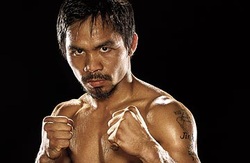 When Manny Pacquiao won a lot of big fights, I can’t imagine the number of advertisers that asked him to endorse their products/services. It’s a wow!!!
Just few years back Manny encountered consistent losses. Try to observe, if not most of them, all of his endorsements were gone. This is the sad part when you get an athlete, like a boxer. It’s hard to have an endorser who has lost a competition. It sounded like the product is also on the losing edge. Is this reality? Where is ethics in advertising? If you compare this to another sport like basketball, you’ll notice an advertiser who has a basketball team wouldn't really care if her team loses in PBA. Isn’t that similar with Pacquiao? The unethical part here is we praise and want to be with someone when he has done great things but when things turn out to be on the bad side, people usually stay away from that person. It’s like saying, you only gonna meet true friends when you are down. Could this mean that the owners and managers of the products/services that Manny has endorsed have no heart? Products/services will only exist and might become a successful brand if there are people behind. That’s why there is always a tag that says “Made in (country).” Anyway, let’s just wait after the fight. If Manny wins, you think his endorsers will come back and ask his support again? Let’s see. Good luck Manny.
0 Comments
 Last September (2013), a singing contest was held in one of the biggest TV networks in the Philippines. Based on the KBP rule on advertising, a TV station is only allowed to have a commercial load of 18 minutes per hour. Since the said singing contest was a big event on that night, this TV network has no choice but to take advantage of its demand. Advertisers know that many people will watch the said contest so they invested on TV spot commercials. In other words, the 18-minute rule on commercial load wasn’t really observed because of its high demand. Likewise, all shows can’t maximize the 18-minute commercial load if it’s not a big event or a TV show that doesn’t have a high rating. The fair deal here should be offsetting. The purpose of this rule is perhaps to avoid getting irritated in seeing a lot of commercials especially during a big TV event. I think it’s not really an applicable rule. I believe that it’s the fault of the TV network if viewers get pissed on the many commercials being aired. Because viewers like the big event, still they will watch it. By the way, this TV network exceeded the 18-minute rule. Their commercial load lasted for 20-21 minutes per hour.
Given the 18-minute commercial load rule, I believe that a recall is not achievable if an advertiser will repeat its commercial less than 3 spots. Based on “Effective Frequency,” it needs 3 repetitions on TV exposure according to Herbert Krugman who is from General Electric. Psychologically, fourth are repeats of the of the 3rd exposure effect. There is a myth in the advertising world that viewers will forget your message if you don’t repeat your advertising often enough. In addition, Krugman says that there are only three levels of exposure in psychology: curiosity, recognition and decision. If the 3-commercial spot repetition is the key to gaining high recall, then advertisers need to increase the number of spot commercials in an hour. The more different ads being aired, the lesser the chances of gaining high recall. It’s called information overload. Information overload could be equivalent to zero knowledge. It is like saying, “The more you study, the more you know, the more you know, the more you forget, and the more you forget, the less you know.” What a waste. Here’s the commercial load data of the singing contest: Advertisers Spots Per Hour · Creamsilk has reached the highest number of spots ……………… 10 · Nescafe…………………………………………………..……………. 3 · Mentos …………………………………………………………………. 2 · Globe ………………………………………………………………….. 2 · Dove…………………………………………………………………… 2 · Knorr…………………………………………………………………… 2 · Energen …………………………………………….…………………. 2 · The rest 37 advertisers……………………………………………….. 1 Good work Creamsilk... Sports event especially basketball has less commercial breaks and spots than teleserye and singing contests. Advertisers need to maintain the excitement of the audience watching the sport event. Advertisements are only aired during the time out. If commercial load can be controlled during a sports event; then why can’t broadcasting station limit their commercials. Instead of the 15-30 second spot, insert the commercial through a moving or scrolling text, or logo/message flashing. If advertising is done through broadcasting, we can’t really assure if people are staying on the said commercial breaks. Viewers can still switch to other stations during commercial breaks. What would happen to your 3-commecial repetition per hour if you can’t really come up with justified viewers? They watched the singing contest because they have a bet singer and they also want to see their favorite judges. This doesn’t mean that they will still stay on the channel when there’s a commercial break especially when they are holding TV remote controls. This could be a captive market but it doesn’t focus on the commercial but on the show. We in narrowcasting call this kind of audience, “Private Captive Market.” Meaning, advertisers can’t see the audience watching their commercials if they are in their houses or private cars. It should not be all about ratings of TV networks. Advertisers must focus on the value of their ad investments. Are they really being watched by their target market? This is why John Wanamaker quoted, "Half the money I spend on advertising is wasted; the trouble is I don't know which half." So if an advertiser bought a number of spots worth Php10,000,000; then value of its investment is only Php5,000,000. In selling, the value of the product or service should always be higher than the price. You should tell the value of what you are selling by mentioning the benefits and features that sounded very expensive but the price when asked by the prospect is very low. Now going to audio or cadio advertising through narrowcasting, I would suggest the 4-spot repetition within the average staying time of people in different establishments. People in commercial establishments like malls, supermarkets, restaurants, and other places don’t really listen. Hearing is the usual thing in narrowcasting. Strategically, the goal is to come up with high attention getter commercials so that people might listen. On TV, people are attentively watching the show but not the commercial. On cadio, people are hearing the commercials strategically. Which one is better? Reference: Effective Frequency – Wikipedia and 18-minute rule - KBP… 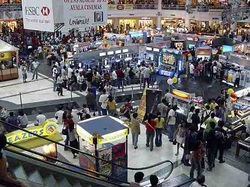 Maximizing the wall and ceiling speakers of different establishments is captive market...
Captive Market Behavior Ø Unheard – This is the lowest level of “PUBLIC CAPTIVE MARKET APPROACH.” Why still a captive market? Because the commercial is being played but can’t be heard by people due to a low sound volume level (no standard volume & equalization), high echo, high sound effects & background music volume, high ceiling speakers, fast pace announcement, & high noise pollution. When heard in a mall with a standard sound volume & later people inside increase; the sound of it decreases because of its noise pollution which loses its message clarity. People talk while shopping around when they are with friends, relatives, family, etc. These small talks produce sound that covers the volume of the ceiling or wall speakers. This lessens the value of its audio commercial which purpose is to disseminate messages. Even if we disseminate the message but it can’t be understood; still, it’s useless to narrowcast & advertise. Another problem is the echo, making the sound quality, poor. Ø Heard – This is in the mid level of “PUBLIC CAPTIVE MARKET APPROACH.” Audience are not paying attention on the commercial that is being played but unconsciously (unconsciousness as a personal habit; being unaware and intuition) or semi-consciously (semi-consciousness - awakening, implicit memory, subliminal messages, trances, hypnagogia, & hypnosis.) it gets into their mind & later remembers it because of its standard 4-time repetition of a 30-second commercial within the AST (Average Staying Time). Ø Listened - This is the highest level of “PUBLIC CAPTIVE MARKET APPROACH.” People are listening attentively and actively. Sometimes they fall asleep if it’s too long. For us, 5 minutes to 15 minutes is the best duration of having a long commercial or presentation called cadiomercial. How long is the attention span of young ages? Toddlers up to 30 minutes they get bored easily: age1-4. Children about an hour need a break: age5-11. Preteens and teenagers, two or more hour but have to be interested in what they are doing. Reference: http://answers.yahoo.com/question/index?qid=20080621025126AAsqH79. Not to mention the details of our 30 exciting contests which is our highest “attention getter.” Note: If you’re an advertiser and want to see your market hearing your commercials; all you have to do is go to that narrowcast coverage and see all your market. If you can hear your commercial; then the market that you are witnessing can also hear your commercial. Three Kinds of Captive Market Ø PRIVATE CAPTIVE MARKET - the advertiser can't witness their market; they don’t know if their target market is listening, watching or hearing their commercials because the source is in a broadcasting way of disseminating messages. These are homes, offices, private vehicles, & other private places. How can an advertiser witness its market? But still, it’s a “Captive Market” when an audience sees and hears the commercial privately on TV. Ø LIMITED PUBLIC CAPTIVE MARKET – the advertiser can witness their market but there is always a limit. It’s fine even if it is a “limited public market” as long as it has a big area. The best example here is a passenger ship/boat and commercial airplane. They have big areas but limited number of passengers. Cabvision is also an example of a limited public market. First it has a small space and area. If there is already a passenger; you can’t ask for its service anymore. If there is a TV inside the taxi; how can the advertiser witness the market? The same thing with buses. If it’s already full, you can’t get inside anymore. There’s always a limit. Ø UNLIMITED PUBLIC CAPTIVE MARKET - the advertiser can witness their market; listening, watching or hearing their commercials because of a strategic way of disseminating messages. e.g. When advertisers buy spots in a medium like POP (Point of Purchase) using the audio system of supermarkets or public places by maximizing their speakers; advertisers get more value on their commercials because they can see their target market hearing their commercials. Anyone can enter the said public place; this is why it’s called “unlimited public captive market.” Here are some examples of unlimited public captive market; amusement parks, banks, boutiques, business centers, clinics, couriers, department stores, gas stations, government places, hardware stores, hospitals, hotels, hypermarkets, malls, restaurants, salons, shops, show rooms, sports & gyms, stores, supermarkets, warehouse clubs, etc.  If there is no fashion, new things or new models; then what would life be? Boring? You wouldn’t like to wear or have something for a long time, right? Life is dynamic. We need to adapt to changes. Most of the time, the old people fail to adapt. I think, we should practice and insist on educating the young ones on what’s new and try to influence them that it is a standard way of living. It’s okay not to follow what’s new as long as you can’t afford the value. But if you can buy the latest one, then there should be no other reason not to follow the trend. What happens if we are left behind? Let’s say, you don’t want to give up your old rotary phone; then here comes the easy and fast way of dialing called touch-tone; aren’t you going to change for the better? You think it’s fine to have the rotary phone (pulse)? What if the industry decided to make the rotary phone obsolete, what will you do? Change it? The principle of “change for the better” is what fashion is all about. Telling people what is new is the challenge in advertising. If it’s a new dress; mostly, will go for the visual advertising. But informing the audience through audio advertising (which is narrowcasting using CADIO) is also a good way of educating people on its right term and how it is being pronounced correctly. Just like the pronunciation of a proper noun and a brand called “Cadbury.” In 1992, I worked at Duty Free Philippines, and I was assigned in the liquor and chocolate section. At that time, I used to pronounce “Cadbury” like cad-berry, the same with strawberry. After several years (from 1992 to mid 2000), I heard a radio commercial of “Cadbury” and it was pronounced differently. I can’t imagine I was wrong. This is what I heard: http://www.howjsay.com/index.php?word=cadbury. 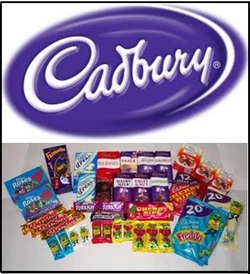 Advertisers’ name their brands and they should also understand that correct pronunciations of their brands are being observed. If it’s only visual, then we have to expect that all people know how to pronounce our brands correctly. Still, you need to use audio advertising. Remember, proper nouns have different pronunciation. Unlike common nouns, there is a standard way of pronouncing them. Brands & terms are owned by company founders, authors, inventors, innovators, politicians, entrepreneurs and the like. So we have to respect the creator. Today’s generation must be oriented with correct pronunciation of brands. Again, old people fail to adapt changes. This reality can also be changed if we start educating them as early as today. If we fail to instill in their system the habit of “being on fashion,” then we lose these market when they get old. In other words, no sale is expected.
 Since 2004 I started wearing shirts with CADIO prints. My office-mates are curious of its name. 70% of my shirts have CADIO prints. It’s like saying, “Curiosity killed the cat”. Once you see or hear something frequently, you become curious of it. Later, you investigate and when you learn that it’s a good one; you include it in your list of brands. The same with Facebook, if you like something; you click on the “like icon.” Now even I don’t tell them about the term CADIO, they will later call me CADIO. Most of the time, they pronounce it incorrectly. So I kept on educating them on how to pronounce CADIO correctly and they learned. I tell them, it’s not KADIO, it’s K-dio; then I tell them what’s CADIO which is a great opportunity of creating free advertising. Here, the idea has got into their minds. Word of mouth marketing comes after people become curious of the something. Some of them read the CADIO quotations that are part of building an image.
Internet marketing is also the same with word of mouth marketing, if you include audio and video promotion. CADIO is connected with narrowcasting. So if you check it in the internet, you’re going to find it once you search on “Philippine Narrowcasting.” CADIO has a website, facebook account, twitter, blogs, youtube, podcast, wikipilipinas and later, CADIO will also be in other media. CADIO will use 3 tags: Philippine Narrowcasting, Digital Media and CADIO Advertising. Lastly, the most practical and traditional of promotion is the giving out of business cards. But make sure, you tell something about your ideas/products/services before you give your business card to your prospect. 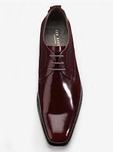 Squared Toe Shoes Squared Toe Shoes Last May 26, 2013, I visited a known department store in Alabang. When I approached the retail sales person, a woman came-in and asked him about the latest available shoes. He pointed out the one that is called “flat toe shoes or squared toe shoes.” Here, I butted-in their conversation. I said, to the woman, no! That’s not the latest kind of shoes. I showed it to her the latest shoes. This one, it’s called “rounded toe shoes.” The retail sales person was embarrassed and never said a word. 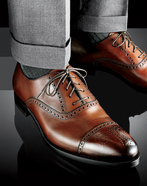 Rounded Toe Shoes Rounded Toe Shoes I also told the woman or the customer that you’ll learn more about men’s fashion on GQ (Gentlemen’s Quarterly) and she thanked me.
Butting-in a conversation could be unethical, but if the information about a certain item is incorrect which could lead to a bad buy (considered lost of value); then as an adman I have to enter their deal. Besides, I’m still considered a customer in that department store. I don’t know why the retail sales person is giving out wrong information on their products. Well this is a bad advertising practice and it should not be tolerated. Marketing should always update their people with their products. If marketing intention is to push their old shoes for inventory purposes, then that is also a bad strategy. Seeing the ads on Print doesn't mean that they’ll buy what they see, unless if it’s an online or a “buy and sell ads.” When people read, they focus on what they need to know not on what they want to buy. The highest level of buying is seeing and touching the real products or experiencing the services. The ads will just remind them of what they should buy but it doesn't really persuade them to buy because once they are in the Point of Purchase, they might change their minds especially when a sales person persuades and pushes them to buy something better…
What about other POINT OF PURCHASE? Are we convinced that shoppers and customers have more time to read posters, streamers, flyers or other similar forms of POP? Try to observe, even there are signs like entrance and exit, pull or push; a lot of people still, make mistakes & do the other way around. A lot of times, shoppers tend to ask the sales person on promos even there are signs or posters facing them. This means that people don’t have much time to read especially when their main focus in entering a commercial place is to buy what they need (refer to the history of cadio in 1992 at Duty Free Phils. in the next page)….. Is audio or cadio advertising done in a narrowcast coverage & a public captive market approach better than the said medium?
According to this site http://gr8marketingideas.com/tag/billboard-advertising/, when it comes to outdoor advertising, people have an attention span of 8 seconds so to be effective adverts must be eye catching yet simply read and understood.
Possibly, the above statement is correct. When I rode the bus few days ago, I tried counting in seconds and it appears that at 80 kmph to 100; it takes 12 seconds to see and read a billboard message. Here, I believe that 12 seconds can be equivalent to 7 to 8 words in a normal pace of reading. Advertisers must focus on few words that include its contact number. Well, Bench practices few words and more on clothing. They get famous celebrities to get ones attention easily; then their clothing follows. I believe this is effective. But I don’t think BILLBOARDS placed in Guadalupe Makati area are effective. Basically, the more signage, the more people are expected to see its ads; the more ads, the more you are confused, the more confusion, the lesser the ads are being noticed and the lower the recall….. Anyway, billboard could only be effective when you place it in an isolated place. It’s not all about the high market traffic but it’s more on the message that could really be recalled by its target market. In my vision, billboards (an out of home advertising) should be linked to narrowcasting. This will be called CADIOVISION. Can’t really tell you more about CADIOVISION now; soon to learn... This will be the future of advertising. In the book "Advertising: Background, Theory and Practice by Isabelo Crisostomo 1993, Alicia M. Pascual of Pulse Research Group says that Filipinos still continue to look up to imported products and brands with foreign image as superior to homegrown ones. So this is before and after 1993. As of now, most products are made in China. In the mid 2000, outsourcing of production was monopolized by China because of cheap labor. Filipinos who are exposed to different good qualities from different countries learned that items made in China have low qualities. It is now a mindset to FIlipinos that China products are disposable. Now the Philippines has conflicts with China because of island ownership and Filipinos are starting to hate China. An opportunity of pushing "made in the Philippines" is the next big thing. If we can't have the imported items, then let's have our own items... Cherry and MyPhone are made in the Philippines. Although the raw materials came from China, at least the software was made in the Philippines. This is a good sign of liking our own products and services. So the challenge is, what is the preference of Filipinos now, made in China or made in the Philippines?
|
|
|
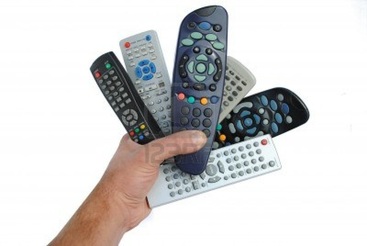
 RSS Feed
RSS Feed
